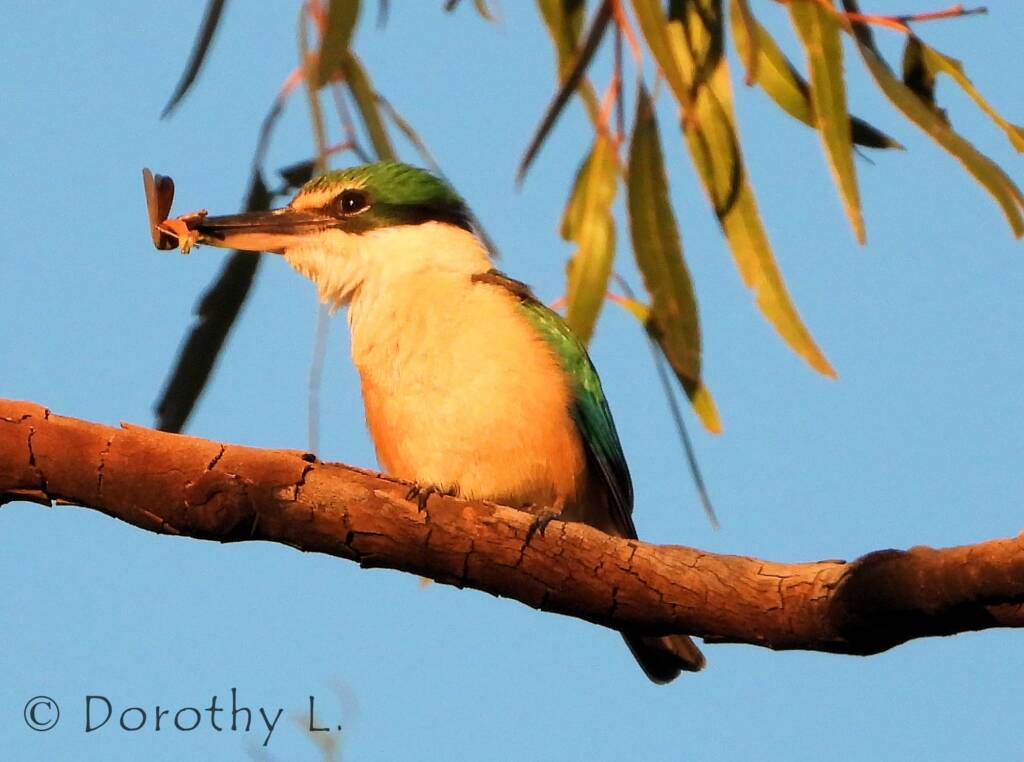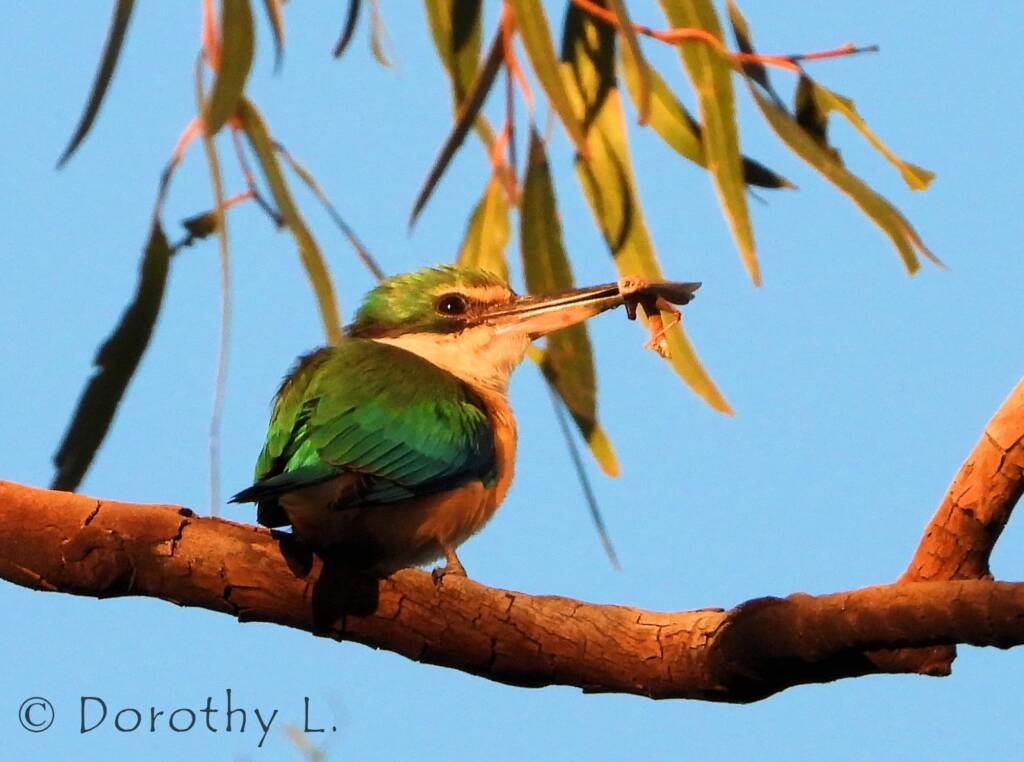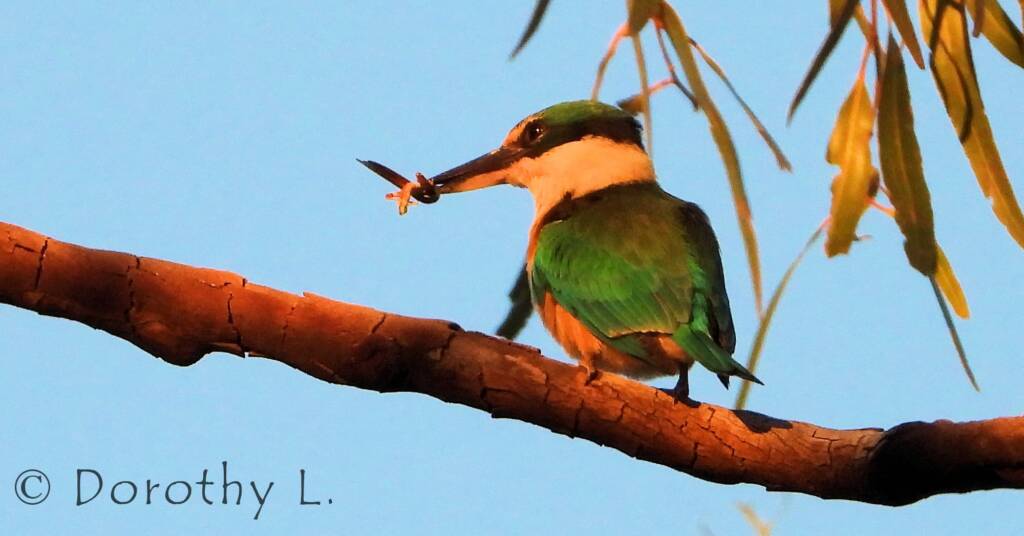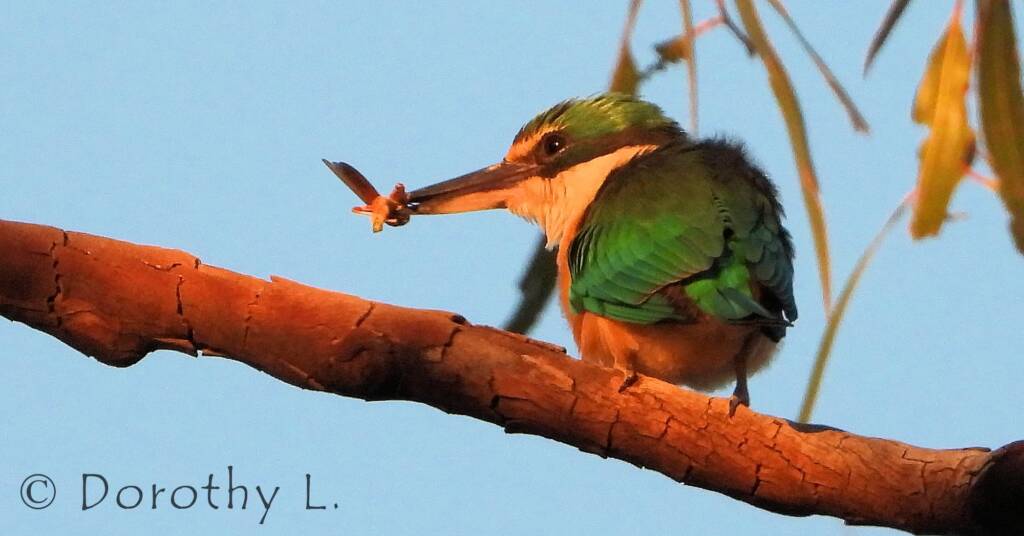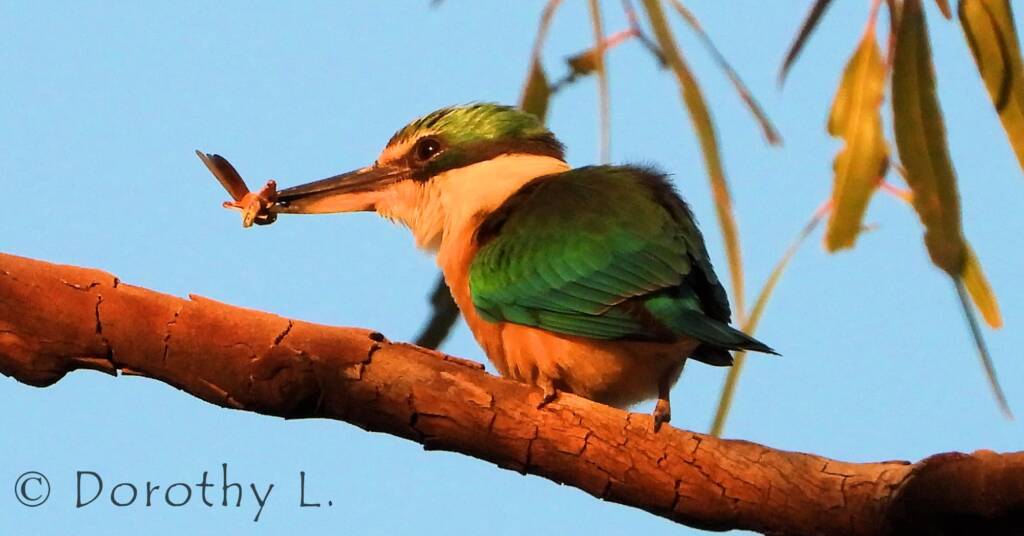KingfishersAzure Kingfisher Blue-winged Kookaburra Forest Kingfisher Laughing Kookaburra Red-backed Kingfisher Sacred Kingfisher Torresian Kingfisher
The Sacred Kingfisher (Todiramphus sanctus) is a species of kingfisher seen around Australia, although rare in dry desert region, they are found in the arid region of Alice Springs in Central Australia. They are a migrant bird, with the population in the southern parts of Australia migrating to northern Australia after their breeding season.

In Australia they have been sighted in open eucalypt forests, woodlands, melaleuca swamps, mangroves, mudflats, wetlands, river valleys regions, parks and gardens. They are also found on Lord Howe Island, Norfolk Island, New Zealand, New Guinea and other parts of the western Pacific. In New Zealand the species is also known as kotare (from the Māori kōtare).

The Polynesians believed the sacred kingfisher to have control over the waves, like the local subspecies of collared kingfisher and kingfishers in the Pacific regions that were also ascribed venerable power over the ocean.
Description
A medium size bird, that vary slightly in colour from blue-green to turquoise upper, white collar feathers, an ochraceous underparts to a dull off-white colour, black mask and buff lores (ornithology: the lore is the area between the eye and bill on the side of a bird’s head). Both sexes are similar, although the female of the species are usually greener, with a duller and less buff beneath. The juvenile sacred kingfisher have a buff/mottled brown colour on the edges of the collar, underparts and upper-wing coverts.

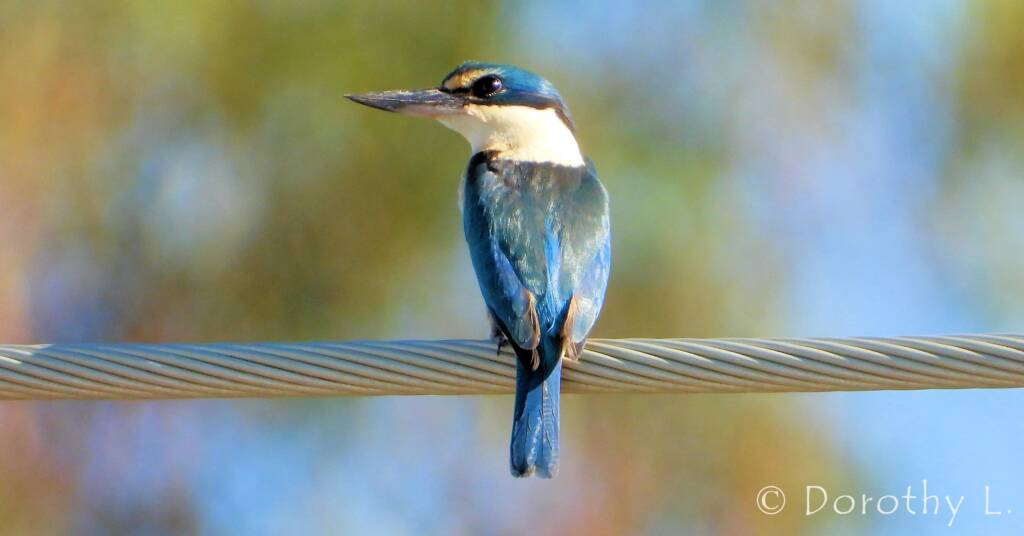
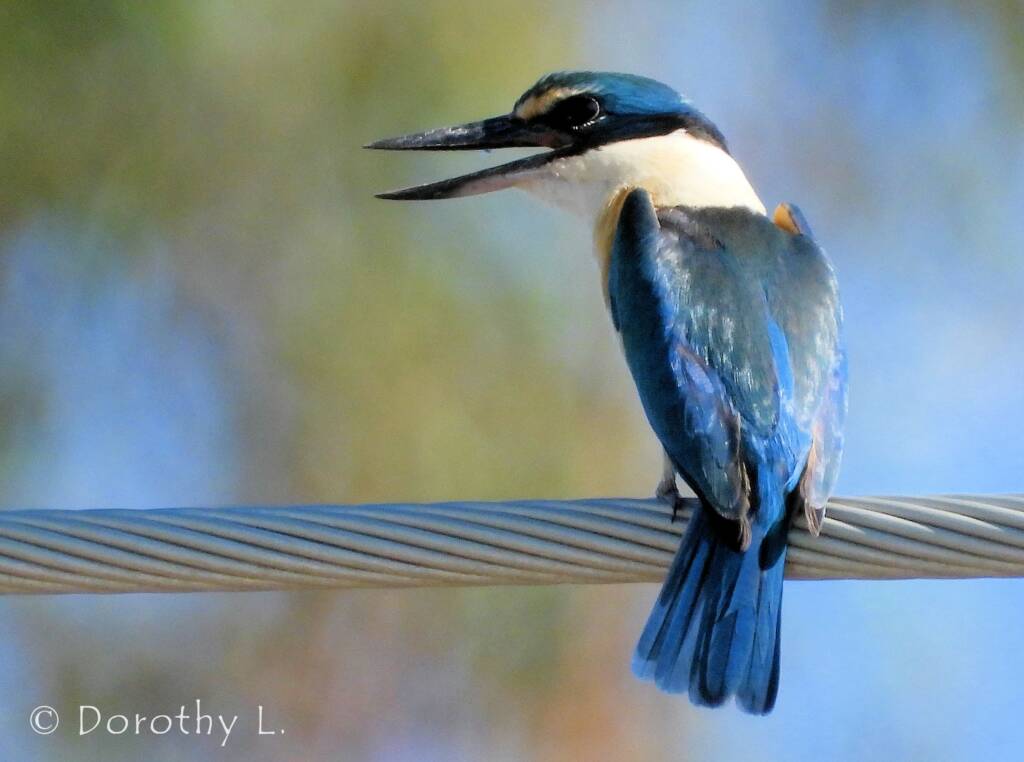
Diet
The Sacred Kingfishers feed on insects and small reptiles, as well as fish and yabbies and have been know to feed on fish from garden ponds.

Breeding
As well as existing tree hollows, they are also known to nest in arboreal termite mounds into which they drill a short nest tunnel. They have also been seen tunneling a nest in a high earthen bank. Most of their nesting are high off the ground, providing safety from goannas hunting for food.
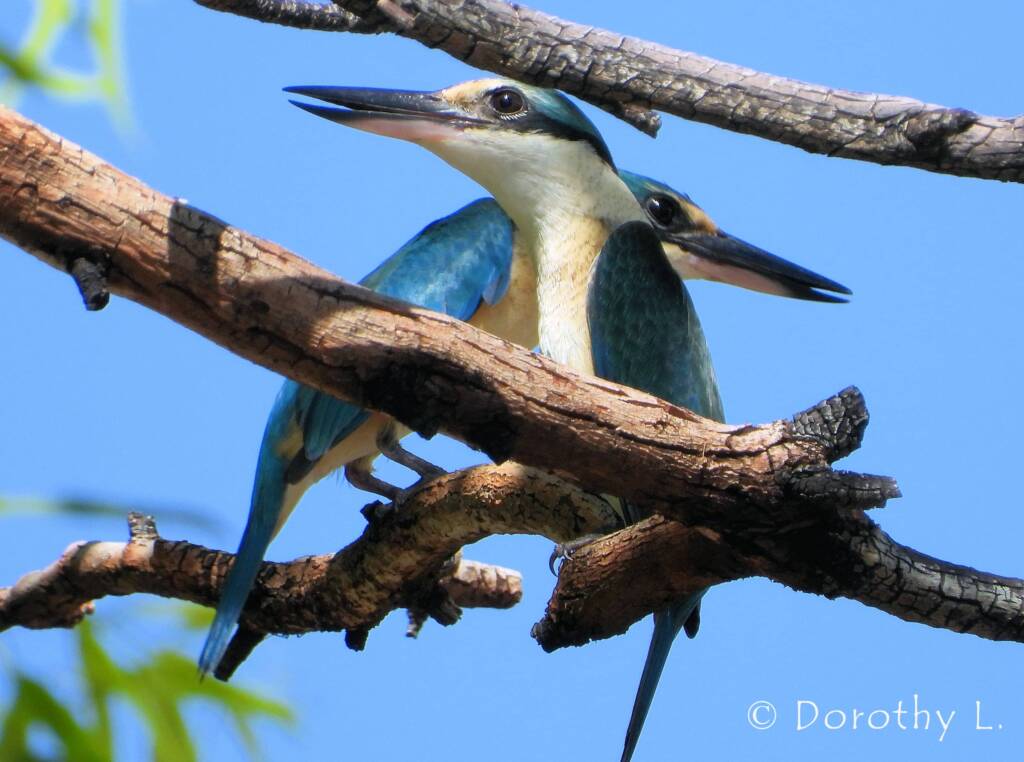
The female lays a between 3 to 6 glossy white eggs, which they incubate for 17-18 days mostly by the female, but the male also is known to take turns. They feed the young for up to 4 weeks, and for a further week after fledging.
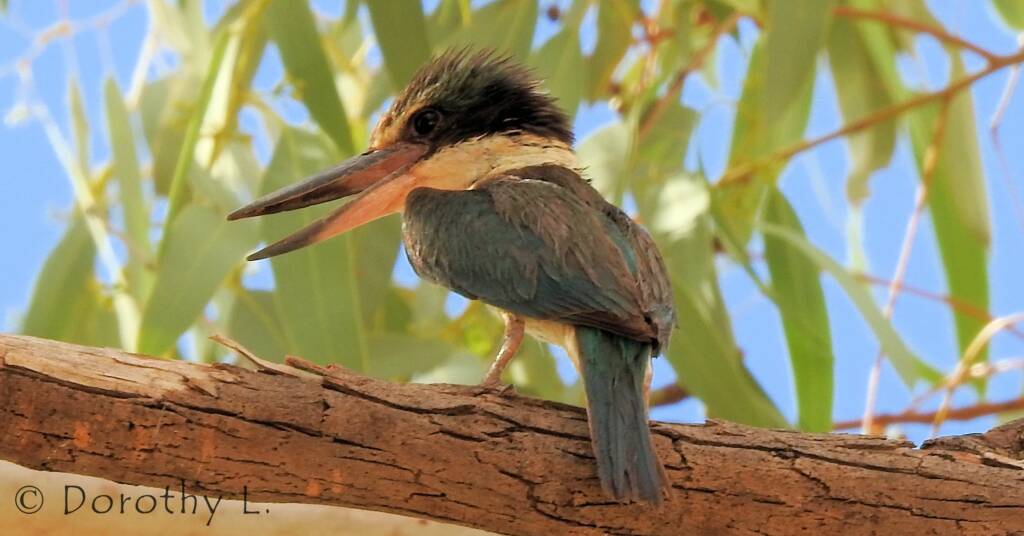
Described by the naturalists Nicholas Aylward Vigors and Thomas Horsfield in 1827 under the binomial name Halcyon sanctus. The genus Halcyon is now split and the sacred kingfisher has been placed in the genus Todiramphus that had been erected by the French surgeon and naturalist René Lesson in 1827.
Todiramphus is derived from the genus Todus, ‘tody’ (from a West Indian insectivorous bird) and the Ancient Greek rhamphos, ‘bill’. The Latin sanctus means ‘sacred’.
The taxon Halcyon sancta has been resolved to the rank of Species.
Five subspecies are recognised1:
- T. s. sanctus (Vigors & Horsfield, 1827) – Australia to eastern Solomon Islands, New Guinea and Indonesia
- T. s. vagans (Lesson, R, 1828) – New Zealand, Lord Howe Island and Kermadec Islands
- T. s. norfolkiensis (Tristram, 1885) – Norfolk Island
- T. s. canacorum (Brasil, L, 1916) – New Caledonia and Isle of Pines
- T. s. macmillani (Mayr, 1940) – Loyalty Islands
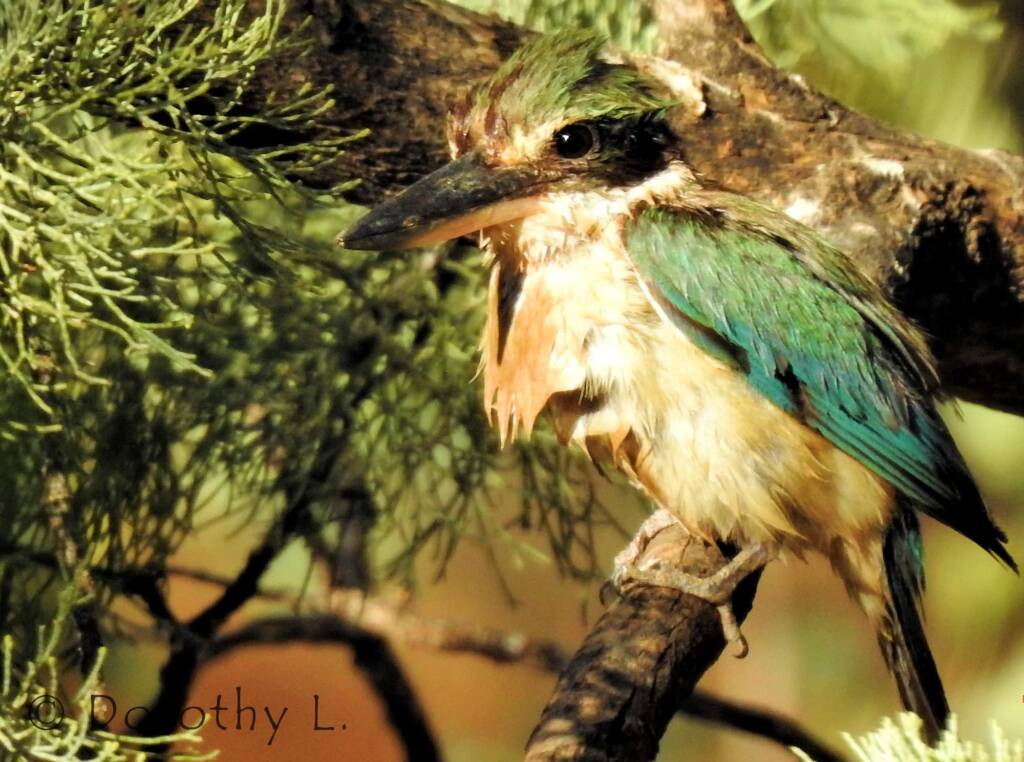
The presented series of photos are by Dorothy Latimer and were taken in Alice Springs and Central Australia – Olive Pink Botanic Garden, Simpsons Gap and Vatu Sanctuary, Alice Springs.
You can also check out the series of photos by Dorothy L of the Sacred Kingfisher drying itself off after a swim at the Olive Pink Botanic Garden, among others.
- Scientific classification
- Domain: Eukaryota
- Kingdom: Animalia
- Phylum: Chordata
- Class: Aves
- Order: Coraciiformes
- Family: Alcedinidae
- Subfamily: Halcyoninae
- Genus: Todiramphus
- Species: T. sanctus
- Binomial name: Todiramphus sanctus
- Synonyms: Halcyon sancta
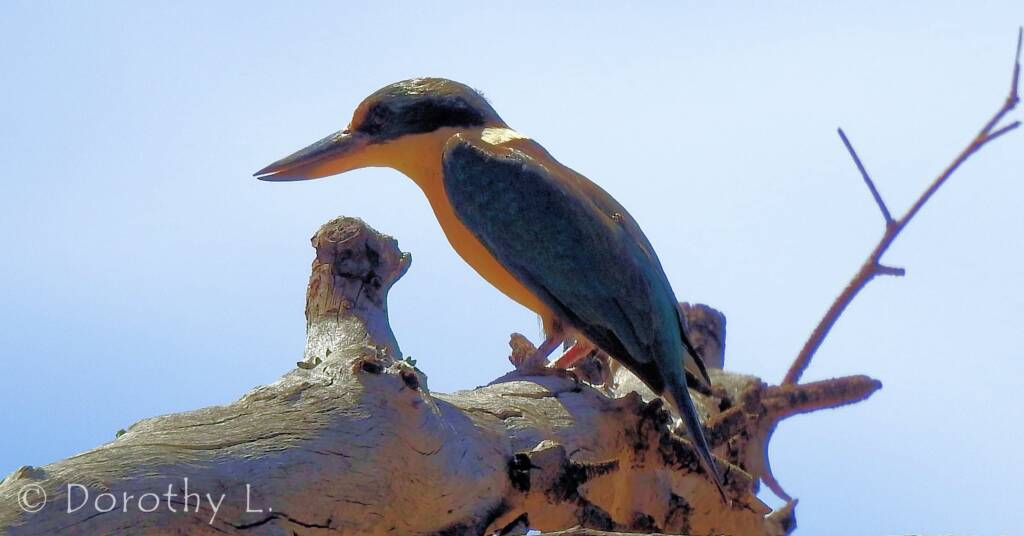
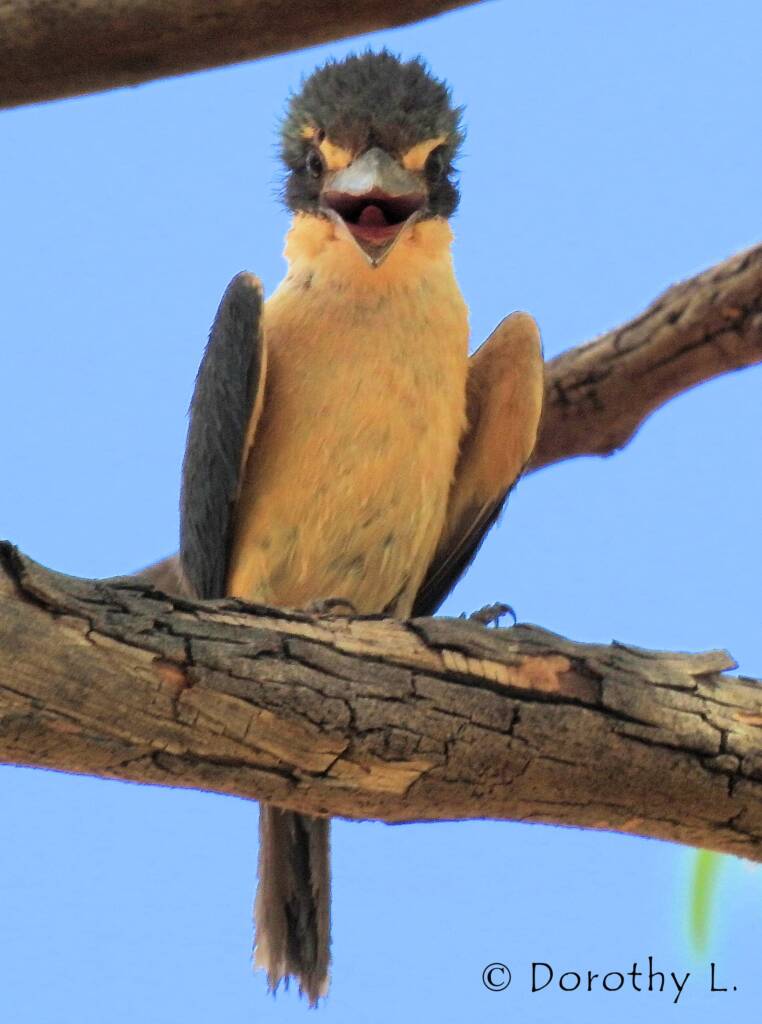
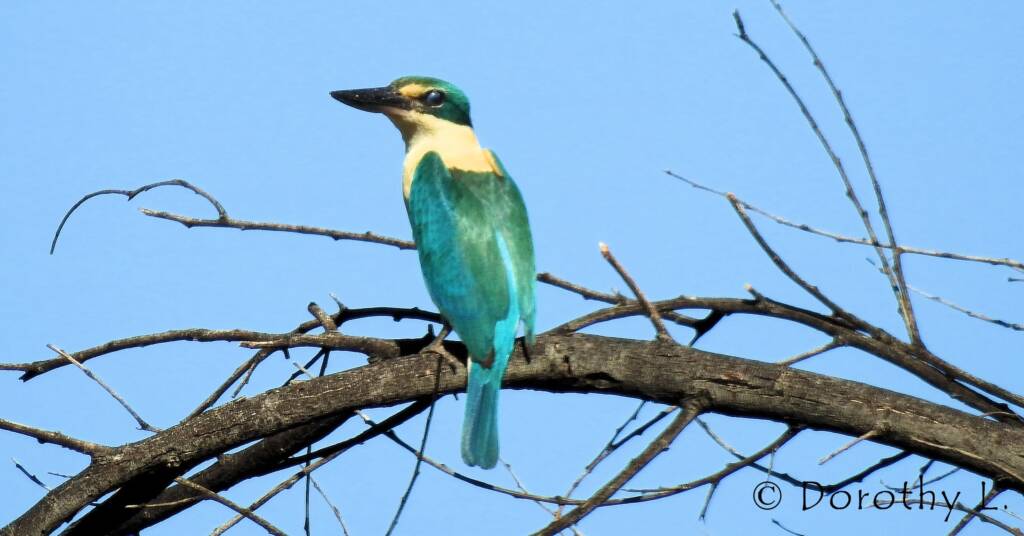
Footnotes & References
- Gill, Frank; Donsker, David, eds. (2017). Rollers, ground rollers & kingfishers. World Bird List Version 7.2. International Ornithologists’ Union. Retrieved 28 May 2017.
KingfishersAzure Kingfisher Blue-winged Kookaburra Forest Kingfisher Laughing Kookaburra Red-backed Kingfisher Sacred Kingfisher Torresian Kingfisher



